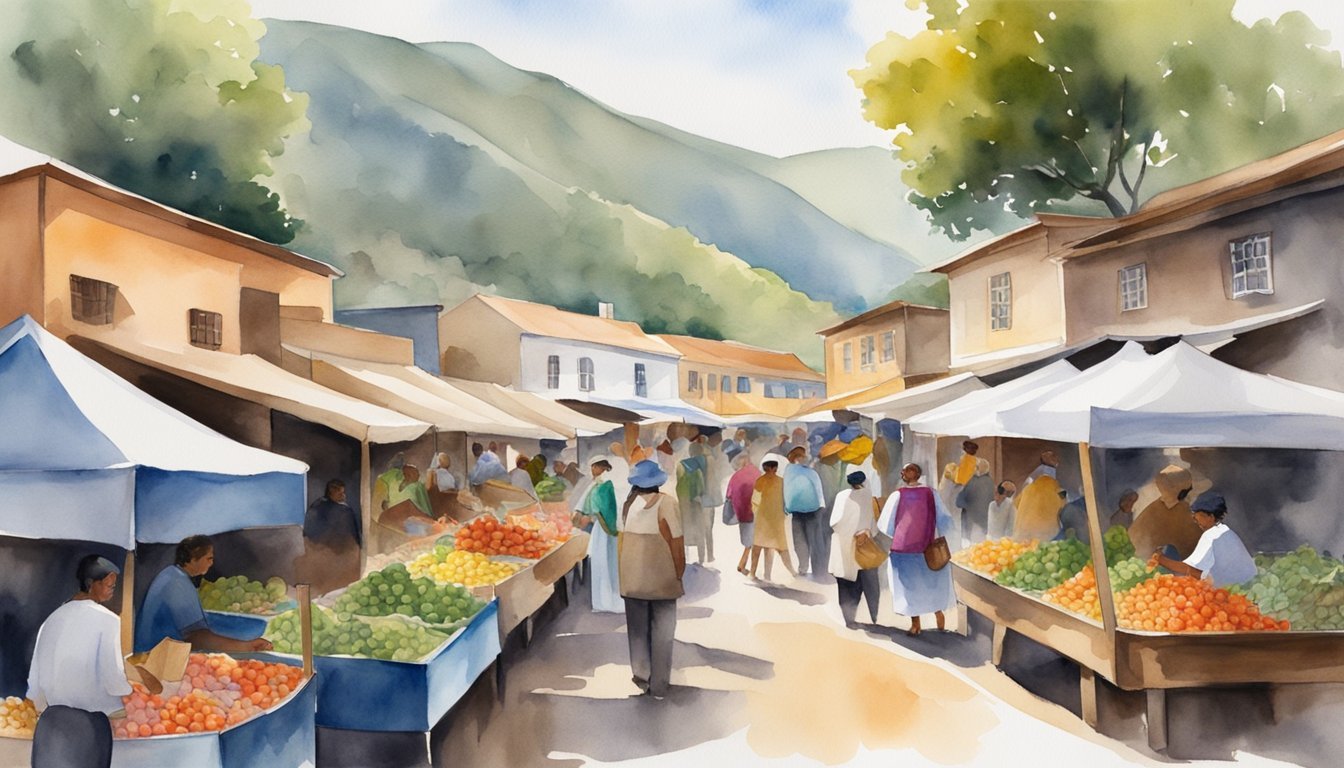Discovering Saint Helena
Early History and Exploration
Saint Helena is a remote British Overseas Territory located in the South Atlantic Ocean. It is part of the St. Helena, Ascension, and Tristan da Cunha territories. The history of this island dates back to its discovery by Galician navigator João da Nova in 1502, during the era of the Portuguese Empire. Named Santa Helena to honor the mother of Roman Emperor Constantine, Saint Helena later became an important refueling stop for ships traveling between Europe and East Asia.
British Influence and Governance
The British Crown first claimed Saint Helena in 1659, and it has remained a British Overseas Territory ever since. Jamestown, named after King James II of England, was established as the island’s capital. The Saint Helenian people developed a unique cultural identity as they lived under British governance throughout the years.
St. Helena, along with Ascension Island and Tristan da Cunha, are governed as a single territory with each island having its own local administration. The territories are under the jurisdiction of the United Kingdom but also maintain a degree of autonomy.
Geography and Climate
The islands in this territory are of volcanic origin, located in the South Atlantic Ocean. St. Helena lies approximately halfway between South America and Africa, while Ascension Island is to the north and Tristan da Cunha is to the south. Geographically, St. Helena covers an area of 47 square miles (122 square kilometers) and includes steep cliffs, rugged terrain, and lush vegetation.
The climate on these islands is generally moderate and temperate, influenced by their location within the marine subtropical zone. St. Helena experiences mild temperatures year-round, with a cooler and windier climate at higher elevations. The landscape varies greatly across the territory, providing diverse habitats for unique flora and fauna species to flourish.
Culture, Economy, and Modern Life

Demographics and Society
Saint Helena is a volcanic island located in the South Atlantic Ocean, part of the remote British overseas territory of Saint Helena, Ascension, and Tristan da Cunha. Its population mainly speaks English and has a mix of African, British, and Chinese descents. The mostly Christian population follows various denominations, such as Roman Catholic and Anglican churches.
Saint Helena’s residents, known as Saint Helenians, have had British citizenship since 2002. The government structure includes a Governor and a Legislative Council. The capital of the island is Jamestown, which also serves as the main port of the island.
Economic Activities
The primary economic activities on Saint Helena are farming, fishing, and tourism. Farming includes the cultivation of coffee, corn, potatoes, and vegetables, as well as raising sheep, goats, and cattle. The export income comes from coffee, fishing, and sales of alcoholic liqueurs.
Coffee from Saint Helena is particularly renowned for its unique flavor. In fact, the island’s coffee was appreciated by Napoleon Bonaparte during his exile at Longwood House. Recently, there have been efforts to revive other native plants like the St. Helena ebony, St. Helena redwood, black cabbage trees, and the endangered wirebirds, which contribute to the island’s ecosystem and biodiversity.
Saint Helena’s fishing industry is important for both domestic consumption and export. The waters around the island are rich with various fish species. Unemployment on the island is low, with only a small percentage of the economically active population being unemployed.
Tourism and Accessibility
Tourism is an essential part of Saint Helena’s economy. With historical sites like Longwood House, where Napoleon Bonaparte was exiled, and natural attractions like Sandy Bay and Diana’s Peak, the island has much to offer visitors. The island’s tourism was once limited due to its remote location and accessibility challenges. However, with the construction of Saint Helena Airport, commercial flights from South Africa and improved mail ship services have made it easier for tourists to explore the island.
Saint Helena has great historical relevance as it was a stopping point for Captain James Cook, Edmond Halley, Oliver Cromwell, and the West Africa Squadron who fought against the slave trade. The island’s unique culture, ecosystem, and history attract visitors seeking adventure and knowledge about this remote British overseas territory. Saint Helena’s rugged landscapes and rich heritage make it a fascinating destination for historians and travelers alike. Much like the Easter Island mysteries, the island’s isolation has preserved its unique traditions and historical sites, offering insight into its past. Visitors can explore Napoleonic-era landmarks, diverse wildlife, and breathtaking cliffs that tell the story of its strategic importance over the centuries.

